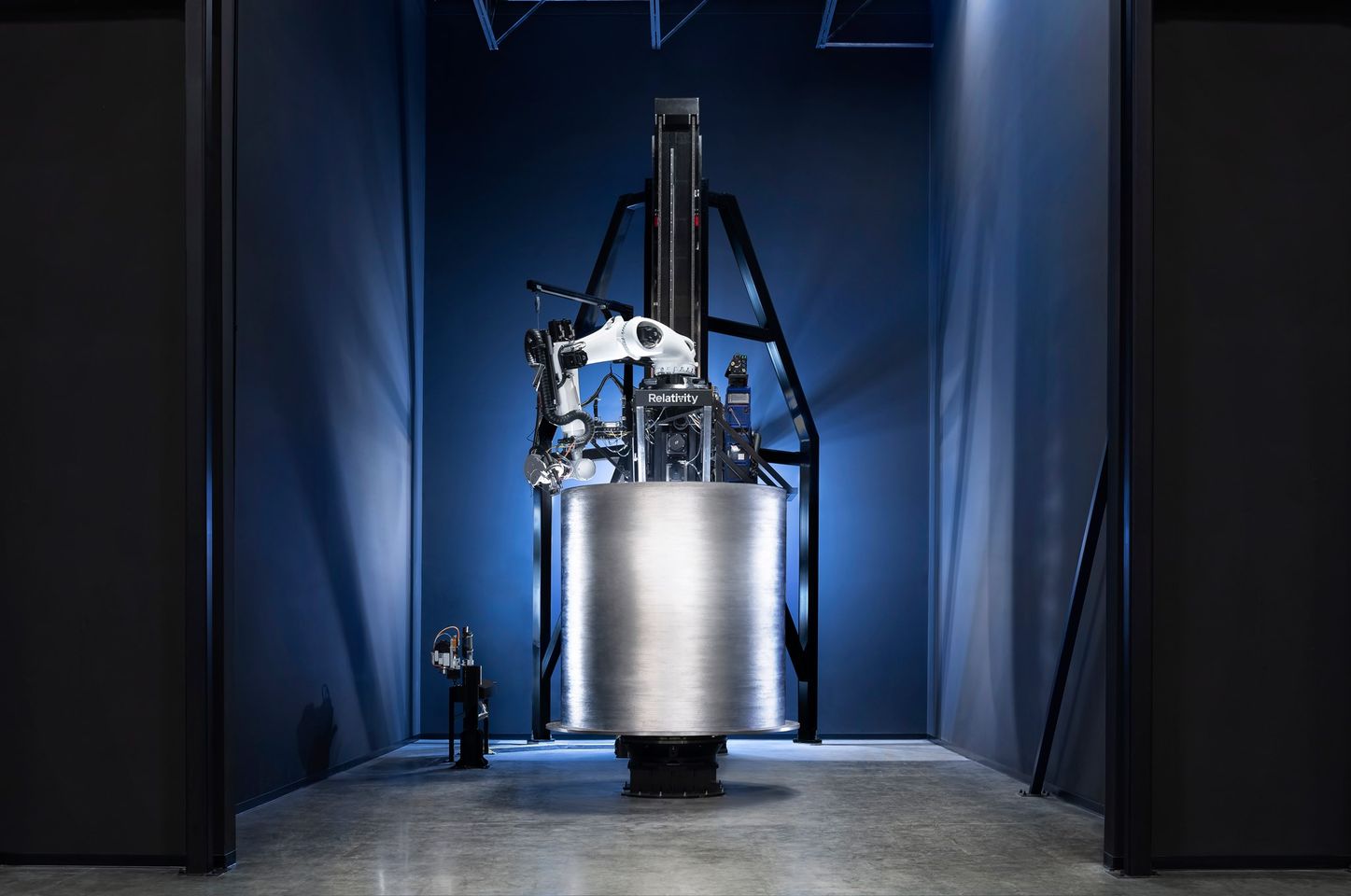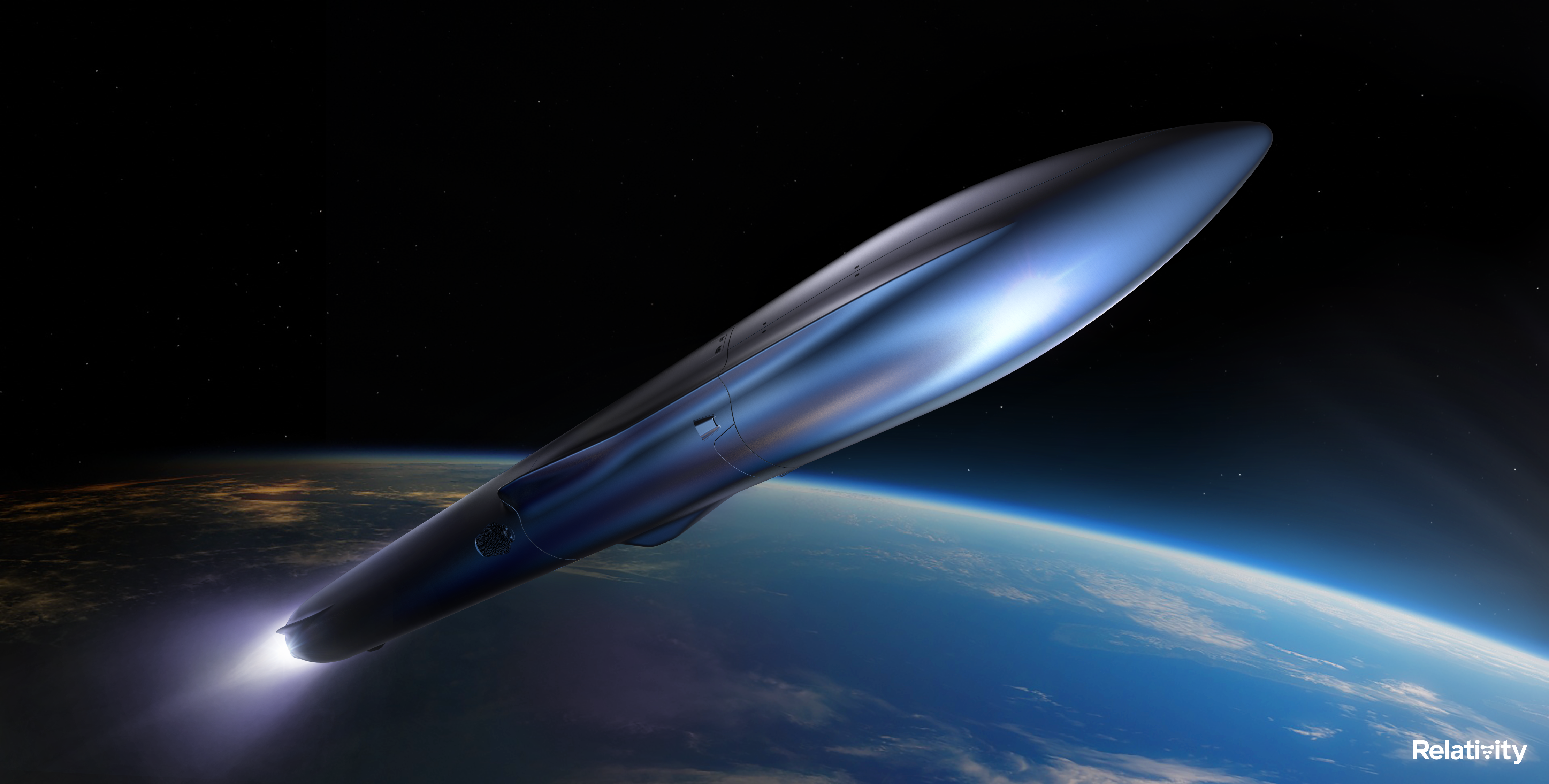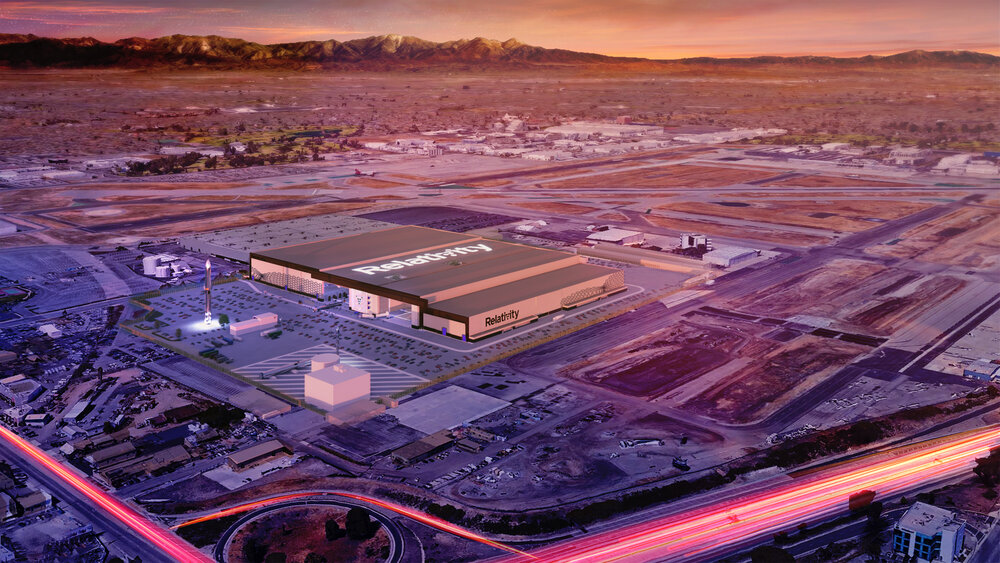Relativity Space, the first company to 3D print an entire rocket and build the largest metal 3D printer in the world, has revealed plans for a major expansion of its operations in Long Beach, California. A new 1-million-square-foot facility ready in January 2022 will accommodate Relativity’s “Factory of the Future” for scaling production of its 3D printed Terran R medium-lift launch vehicle, set to take off from Cape Canaveral in 2024. The company’s existing Long Beach facility will continue to produce Terran 1, the first entirely 3D printed small launch vehicle design.
The announcement builds upon the company’s continued momentum, including the closing of its $650 million Series E fundraising, the reveal of the Terran R rocket for next-generation satellite launches and multi-planetary transportation, the inauguration of its first facility in Long Beach, and what Relativity is calling “an unprecedented year of job creation.” The startup now employs more than 450 people, growing 300% within the last year, across its Long Beach, Vandenberg, Seattle, Washington D.C., Stennis, and Cape Canaveral locations. Moreover, it is on track to hire 200 additional employees by the end of 2021.
Relativity’s site will be built on Boeing’s former C-17 manufacturing plant. The 93-acre plot of land adjacent to Long Beach Airport was put up for sale in 2018 and included a 25-acre main assembly building where workers built close to 280 C-17 large military transport aircraft for the U.S. Air Force and more than a half dozen foreign customers.
It didn’t take long before the property was acquired for more than $200 million by Australian developer firm Goodman Group and destined for commercial redevelopment. The new Relativity headquarters will be part of a coveted land set to be transformed into a modern business district as part of Long Beach City Council’s recently passed Globemaster Corridor Specific Plan for the corridors in Cherry Avenue and Spring Street.
Goodman North America CEO Anthony Rozic explained that the repurpose of the rare, strategic, and iconic location will have a low impact on the environment, mainly because, by partnering with the city, the site will be “sustainably redeveloped,” removing the need for large scale demolition and new construction. In addition, Rozic described Relativity as “the ideal partner” for the upcoming site, capable of providing thousands of job opportunities for the Long Beach community.

The 93-acre Boeing C-17 facility in Long Beach was sold to the Goodman Group and will house the new Relativity Space headquarters and factory of the future. Image courtesy of SCNG/Boeing.
Designed in collaboration with renowned architecture studio Gensler, the new Relativity headquarters will be one of the largest in the private space industry, after SpaceX, Blue Origin, and Virgin Orbit. The new site will have a capacity for more than 2,000 employees, a metallurgical laboratory, direct metal laser sintering (DMLS) printers, a mission control center, and dozens of the company’s proprietary Stargate 3D printers, which are the core of Relativity’s production.
To make its rockets, Relativity uses two 3D printing technologies. For producing detailed, smaller components, engineers rely on powder-bed printing systems like DMLS. Still, the main focus is on its proprietary AI-driven Stargate platform, which can build small and large parts, such as sub-scale vessels designed for pressure testing or the rocket’s second stage flight tanks. Stargate printers’ patented wire-fed AM technology enables an entirely new value chain and innovative structural designs that make Terran 1 and Terran R possible, accelerating its ability to improve design, production, quality, and speed.

Relativity Space uses Stargate 3D printer to build its Terran 1 and Terran R rockets. Image courtesy of Relativity Space.
As a vertically integrated technology platform, the spacecraft manufacturer says it is at the “forefront of an inevitable shift toward software-defined manufacturing.” With software changes, the company claims its Stargate printers can create both rocket designs, Terran 1 and the doubled-up version, Terran R, which is currently under development and designed to compete with SpaceX’s Falcon 9 rocket. The latest model of Stargate stands 30 feet tall and has two massive robotic arms that can manufacture about 95% of the rockets by mass. The only parts that won’t be printed are the electronics, cables, a handful of moving parts, and rubber gaskets.
By fusing 3D printing, AI, and autonomous robotics, Relativity says it’s disrupting nearly sixty years of prior aerospace technology. With no fixed tooling, it has simplified the supply chain and can manufacture a rocket with 100 times fewer parts in less than 60 days. In addition, the novel use of automation allowed Relativity’s factory to remain operational during the 2020 Covid-19 pandemic, working safely with key Stargate operators, and more importantly, keeping the company on track for the launch of Terran 1 in 2021.

Relativity Space’s Terran R medium-lift launch vehicle will debut in 2024. Image courtesy of Relativity Space
The announcement reinvigorates the role played by Long Beach in the aerospace industry. Since World War II, the Southern California city has been a stronghold of aviation history, home to military and commercial aircraft production. Once home to some of the largest plane manufacturers in history, like Douglas Aircraft and Boeing, the city now accommodates big players in the commercial space industry, like Virgin Orbit, Rocket Lab, SpinLaunch, and now, Relativity Space. Before long, we expect this revolutionary spacecraft developer to start rolling out rockets in days from its new facility, ready to launch to orbit, the Moon or Mars.
Subscribe to Our Email Newsletter
Stay up-to-date on all the latest news from the 3D printing industry and receive information and offers from third party vendors.
Print Services
Upload your 3D Models and get them printed quickly and efficiently.
You May Also Like
Metal Powder Supplier Elementum 3D Added to $46B Air Force Contract
Elementum 3D, a Colorado-based developer and supplier of metal powders used in additive manufacturing (AM), announced that the company has been added to the vendors list in the fourth on-ramp...
Ursa Major Lands $28.6M AFRL Deal for 3D Printed Draper Engine Flight Demo
The US Air Force Research Laboratory’s (AFRL’s) Rocket Propulsion Division at Edwards Air Force Base has awarded a $28.6 million contract to Ursa Major for follow-on work related to the...
3D Printing Financials: Rocket Lab’s Record-Breaking Year and Over 20 Launches Coming in 2025
Rocket Lab (Nasdaq: RKLB) closed 2024 with its best year yet. The company launched more rockets, signed more contracts, and expanded deeper into spacecraft and satellite production than ever before....
US Air Force Taps Beehive to Study 3D Printed Jet Engines
Propulsion 3D printing firm Beehive Industries secured a contract from the U.S. Air Force Life Cycle Management Center through SOSSEC. SOSSEC is a company that manages Other Transactions Authority (OTA)...


































